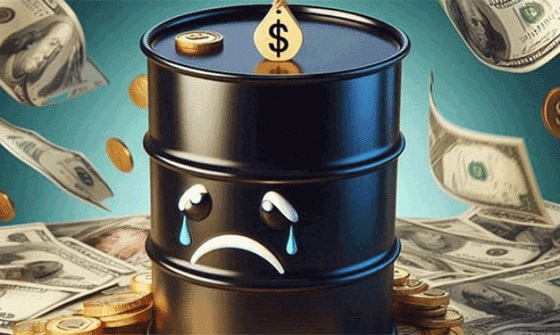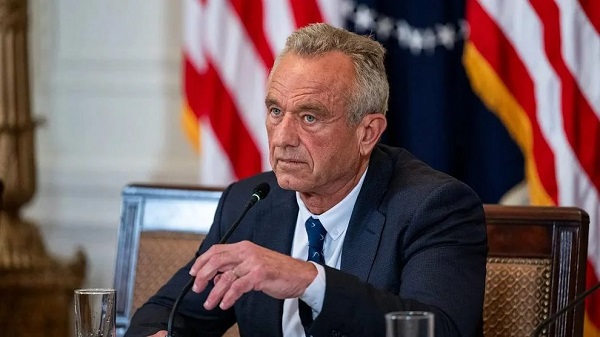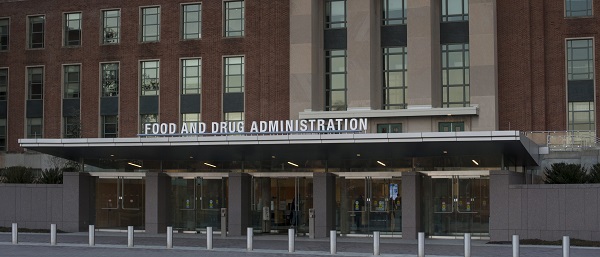Uncategorized
Judge: White House must return CNN’s Jim Acosta’s credential

WASHINGTON — A federal judge ordered the Trump administration on Friday to immediately return the White House press credentials of CNN reporter Jim Acosta, though a lawsuit over the credentials’ revocation is continuing.
U.S. District Court Judge Timothy Kelly, an appointee of President Donald Trump, announced his decision at a hearing Friday morning. The judge said Acosta’s credentials should be returned immediately and reactivated to allow him access to the White House complex for press briefings and other events.
The White House said it would comply, but planned to develop “rules” for orderly press conferences.
The White House revoked Acosta’s credentials last week after he and Trump tangled during a press conference following the midterm elections. CNN sued and asked the judge to issue a temporary restraining order forcing the White House to give back Acosta’s credentials at least temporarily. The judge agreed.
The suit by CNN alleges that Acosta’s First and Fifth Amendment rights were violated when the White House revoked his credentials, called a “hard pass.”
While the judge didn’t rule on the underlying case, he ordered Acosta’s credentials returned for now because he said CNN was likely to prevail on its Fifth Amendment claim — that Acosta hadn’t received sufficient notice or explanation before his credentials were revoked or been given sufficient opportunity to respond before they were.
The judge said the government could not say who initially decided to revoke Acosta’s hard pass and how that decision was reached.
“In response to the court, we will temporarily reinstate the reporter’s hard pass,” White House press secretary Sarah Huckabee Sanders said in a statement. “We will also further develop rules and processes to ensure fair and orderly press conferences in the future.”
The White House had spelled out its reasons for revoking Acosta’s credentials in a tweet from Sanders and in a statement after CNN filed its lawsuit. But the judge said those “belated efforts were hardly sufficient to satisfy due process.”
The judge also found that Acosta suffered “irreparable harm,” dismissing the government’s argument that CNN could simply send other reporters to cover the White House in Acosta’s place.
But the judge also emphasized the “very limited nature” of his ruling Friday. He noted he had not determined that the First Amendment was violated.
The judge told attorneys to file additional court papers in the case by Monday.
On Friday afternoon, more than 50 members of the White House press corps greeted Acosta as he strode through the northwest gate of the presidential compound. He says he’s grateful for the judge’s ruling, that it was a test and he thinks the media passed the test.
“This is just any other day at the White House for me and I would like to get back to work,” he said.
Trump has made his dislike of CNN clear since before he took office and continuing into his presidency. He has described the network as “fake news” both on Twitter and in public comments.
At last week’s press conference, Trump was taking questions from reporters and called on Acosta, who asked about Trump’s statements about a caravan of migrants making its way to the U.S.-Mexico border. After a terse exchange, Trump told Acosta, “That’s enough,” several times while calling on another reporter.
Acosta attempted to ask another question about special counsel Robert Mueller’s Russia investigation and initially declined to give up a hand-held microphone to a White House intern. Trump responded to Acosta by saying he wasn’t concerned about the investigation, calling it a “hoax,” and then criticized Acosta, calling him a “rude, terrible person.”
Hours later, the White House pulled Acosta’s credentials.
The White House’s explanations for why it seized Acosta’s credentials have shifted over the last week.
Sanders initially explained the decision by accusing Acosta of making improper physical contact with the intern seeking to grab the microphone.
But that rationale disappeared after witnesses backed Acosta’s account that he was just trying to keep the microphone, and Sanders distributed a doctored video that made it appear Acosta was more aggressive than he actually was.
On Tuesday, Sanders accused Acosta in a written statement of being unprofessional by trying to dominate the questioning at the news conference.
Jessica Gresko And Michael Balsamo, The Associated Press
Uncategorized
Mortgaging Canada’s energy future — the hidden costs of the Carney-Smith pipeline deal


Much of the commentary on the Carney-Smith pipeline Memorandum of Understanding (MOU) has focused on the question of whether or not the proposed pipeline will ever get built.
That’s an important topic, and one that deserves to be examined — whether, as John Robson, of the indispensable Climate Discussion Nexus, predicted, “opposition from the government of British Columbia and aboriginal groups, and the skittishness of the oil industry about investing in a major project in Canada, will kill [the pipeline] dead.”
But I’m going to ask a different question: Would it even be worth building this pipeline on the terms Ottawa is forcing on Alberta? If you squint, the MOU might look like a victory on paper. Ottawa suspends the oil and gas emissions cap, proposes an exemption from the West Coast tanker ban, and lays the groundwork for the construction of one (though only one) million barrels per day pipeline to tidewater.
But in return, Alberta must agree to jack its industrial carbon tax up from $95 to $130 per tonne at a minimum, while committing to tens of billions in carbon capture, utilization, and storage (CCUS) spending, including the $16.5 billion Pathways Alliance megaproject.
Here’s the part none of the project’s boosters seem to want to mention: those concessions will make the production of Canadian hydrocarbon energy significantly more expensive.
As economist Jack Mintz has explained, the industrial carbon tax hike alone adds more than $5 USD per barrel of Canadian crude to marginal production costs — the costs that matter when companies decide whether to invest in new production. Layer on the CCUS requirements and you get another $1.20–$3 per barrel for mining projects and $3.60–$4.80 for steam-assisted operations.
While roughly 62% of the capital cost of carbon capture is to be covered by taxpayers — another problem with the agreement, I might add — the remainder is covered by the industry, and thus, eventually, consumers.
Total damage: somewhere between $6.40 and $10 US per barrel. Perhaps more.
“Ultimately,” the Fraser Institute explains, “this will widen the competitiveness gap between Alberta and many other jurisdictions, such as the United States,” that don’t hamstring their energy producers in this way. Producers in Texas and Oklahoma, not to mention Saudi Arabia, Venezuela, or Russia, aren’t paying a dime in equivalent carbon taxes or mandatory CCUS bills. They’re not so masochistic.
American refiners won’t pay a “low-carbon premium” for Canadian crude. They’ll just buy cheaper oil or ramp up their own production.
In short, a shiny new pipe is worthless if the extra cost makes barrels of our oil so expensive that no one will want them.
And that doesn’t even touch on the problem for the domestic market, where the higher production cost will be passed onto Canadian consumers in the form of higher gas and diesel prices, home heating costs, and an elevated cost of everyday goods, like groceries.
Either way, Canadians lose.
So, concludes Mintz, “The big problem for a new oil pipeline isn’t getting BC or First Nation acceptance. Rather, it’s smothering the industry’s competitiveness by layering on carbon pricing and decarbonization costs that most competing countries don’t charge.” Meanwhile, lurking underneath this whole discussion is the MOU’s ultimate Achilles’ heel: net-zero.
The MOU proudly declares that “Canada and Alberta remain committed to achieving Net-Zero greenhouse gas emissions by 2050.” As Vaclav Smil documented in a recent study of Net-Zero, global fossil-fuel use has risen 55% since the 1997 Kyoto agreement, despite trillions spent on subsidies and regulations. Fossil fuels still supply 82% of the world’s energy.
With these numbers in mind, the idea that Canada can unilaterally decarbonize its largest export industry in 25 years is delusional.
This deal doesn’t secure Canada’s energy future. It mortgages it. We are trading market access for self-inflicted costs that will shrink production, scare off capital, and cut into the profitability of any potential pipeline. Affordable energy, good jobs, and national prosperity shouldn’t require surrendering to net-zero fantasy.If Ottawa were serious about making Canada an energy superpower, it would scrap the anti-resource laws outright, kill the carbon taxes, and let our world-class oil and gas compete on merit. Instead, we’ve been handed a backroom MOU which, for the cost of one pipeline — if that! — guarantees higher costs today and smothers the industry that is the backbone of the Canadian economy.
This MOU isn’t salvation. It’s a prescription for Canadian decline.
Uncategorized
Cost of bureaucracy balloons 80 per cent in 10 years: Public Accounts

The cost of the bureaucracy increased by $6 billion last year, according to newly released numbers in Public Accounts disclosures. The Canadian Taxpayers Federation is calling on Prime Minister Mark Carney to immediately shrink the bureaucracy.
“The Public Accounts show the cost of the federal bureaucracy is out of control,” said Franco Terrazzano, CTF Federal Director. “Tinkering around the edges won’t cut it, Carney needs to take urgent action to shrink the bloated federal bureaucracy.”
The federal bureaucracy cost taxpayers $71.4 billion in 2024-25, according to the Public Accounts. The cost of the federal bureaucracy increased by $6 billion, or more than nine per cent, over the last year.
The federal bureaucracy cost taxpayers $39.6 billion in 2015-16, according to the Public Accounts. That means the cost of the federal bureaucracy increased 80 per cent over the last 10 years. The government added 99,000 extra bureaucrats between 2015-16 and 2024-25.
Half of Canadians say federal services have gotten worse since 2016, despite the massive increase in the federal bureaucracy, according to a Leger poll.
Not only has the size of the bureaucracy increased, the cost of consultants, contractors and outsourcing has increased as well. The government spent $23.1 billion on “professional and special services” last year, according to the Public Accounts. That’s an 11 per cent increase over the previous year. The government’s spending on professional and special services more than doubled since 2015-16.
“Taxpayers should not be paying way more for in-house government bureaucrats and way more for outside help,” Terrazzano said. “Mere promises to find minor savings in the federal bureaucracy won’t fix Canada’s finances.
“Taxpayers need Carney to take urgent action and significantly cut the number of bureaucrats now.”
Table: Cost of bureaucracy and professional and special services, Public Accounts
| Year | Bureaucracy | Professional and special services |
|
$71,369,677,000 |
$23,145,218,000 |
|
|
$65,326,643,000 |
$20,771,477,000 |
|
|
$56,467,851,000 |
$18,591,373,000 |
|
|
$60,676,243,000 |
$17,511,078,000 |
|
|
$52,984,272,000 |
$14,720,455,000 |
|
|
$46,349,166,000 |
$13,334,341,000 |
|
|
$46,131,628,000 |
$12,940,395,000 |
|
|
$45,262,821,000 |
$12,950,619,000 |
|
|
$38,909,594,000 |
$11,910,257,000 |
|
|
$39,616,656,000 |
$11,082,974,000 |
-

 International1 day ago
International1 day agoGeorgia county admits illegally certifying 315k ballots in 2020 presidential election
-

 Alberta1 day ago
Alberta1 day agoA Christmas wish list for health-care reform
-

 Business1 day ago
Business1 day agoSome Of The Wackiest Things Featured In Rand Paul’s New Report Alleging $1,639,135,969,608 In Gov’t Waste
-

 Energy1 day ago
Energy1 day ago‘The electric story is over’
-

 International1 day ago
International1 day agoCommunist China arrests hundreds of Christians just days before Christmas
-

 Alberta1 day ago
Alberta1 day agoCalgary’s new city council votes to ban foreign flags at government buildings
-

 Alberta18 hours ago
Alberta18 hours agoOttawa-Alberta agreement may produce oligopoly in the oilsands
-

 Energy17 hours ago
Energy17 hours agoWestern Canada’s supply chain for Santa Claus










